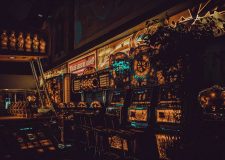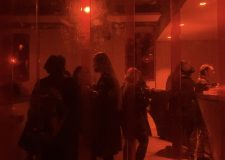What on earth is goblincore?
What do frogs, mushrooms and rocks have in common? Besides being the organic material of a messy toddler’s dream, these items are united as emblems of the internet’s latest aesthetic trend: goblincore.
Birthed by social media site Tumblr (where else), the trend centres around the dirtier side of the natural world. Followers express their goblin-hood differently, some focusing on comfy outfits in moss green and chestnut brown, others concentrating their efforts on bringing the outside in, transforming their bedrooms into house-plant strewn forests. The collections that many curate with magpie-like enthusiasm gives the trend its name, and range from assortments of animal bones to stocks of sea glass. In the case of goblincore, one man’s trash is another teenager’s treasure.
As with all trends starting in 2021, goblincore soon made the switch to TikTok, where the hashtag boasts over 680 million views. Reddit’s r/Goblincore subreddit has also seen a 395% follower increase year on year. Theories as to the aesthetics’ success range from the love of nature many found on their daily lock-down walk last year, to the particular pull of a mud-pie-making nostalgia and need for escapism from the rat-race of modern life.
The trend’s focus on off-the-grid exploration and appreciation of day-to-day natural wonders contributes to its notably anti-capitalist politics, something it shares with its more popular and approachable big sister, cottagecore. The main difference includes the 8.1 billion videos tagged #cottagecore on TikTok and its softer, domesticated image – think jam tarts, pet goats and wild-flower arrangements. Both aesthetics idealise an escape from consumerist city life to a wilderness that expects nothing more of them than survival and the occasional animal themed baked good (see: @oracle_bakery’s adorable frog cakes/thousands of followers).

What makes goblincore stands out is accessibility. It’s a breath of alpine air from the aspirational content that floods social media and so often romanticises career success, a spotless living space and 6am workouts. The goblins of the internet reject this performance of perfection, instead revelling in deformity. Where the rest of the world might see hordes of junk, the goblin finds beauty. Where others see hours wasted foraging, the goblin finds freedom. Where others see a frog, the goblin sees a small, slimy friend.
This accessibility is also monetary, continuing the trend’s anti-consumerist politics. DIYs litter the goblincore hashtag on every social media, and teach those who find them how to pot plants, dry flowers and make moss rugs. Where online minimalism ironically encourages the purchasing of brand new items to create its popularised, clean aesthetic, goblincore’s maximalism demands organic, thrifted and crafted items.
As a trend that pushes against mainstream expectations, it’s no surprise has also become a welcoming LGBTQ+ space. As a community build around finding the beauty in the different, queerness has become undoubtedly linked to goblincore. Some claim the popularity of mushroom iconography stems back to the thousands of sexes found among fungi, embodying the idea that, in this community there is no need to fit into any box.
As the popularity of goblincore keeps growing, the internet is flooded with more and more goblin coverts who seek an escape from the daily grind, a place of boundless acceptance and storage ideas for their pebble collection. Why not have a look yourself, who know what treasures you might find?
Words by Kate Bowie




















